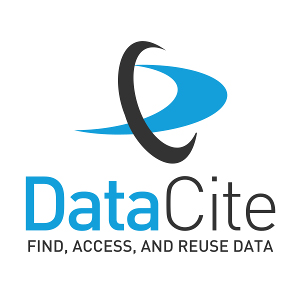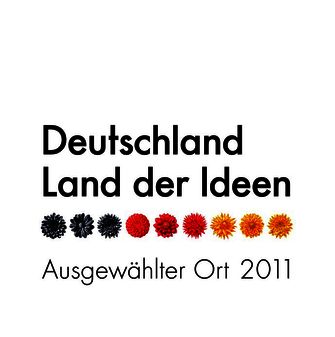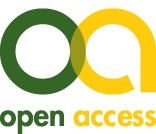[Co-Creation eines Krebsscreening-Dashboards mit zum Screening Eingeladenen und Experten]
Corine Oldhoff-Nuijsink 1,2Floris Buitendijk 1
Marlon Rolink 3
Marloes E. Derksen 1
Linda W. P. Peute 1
Mirjam P. Fransen 2,4
1 Amsterdam UMC, location University of Amsterdam, Department of Medical Informatics, eHealth Living & Learning Lab Amsterdam, Amsterdam, The Netherlands
2 Amsterdam Public Health, Digital Health, Amsterdam, The Netherlands
3 Epidemiology and Data Science (EDS), Amsterdam UMC, location AMC, Amsterdam, The Netherlands
4 Amsterdam UMC, location University of Amsterdam, Department of Public and Occupational Health, Amsterdam, The Netherlands
Zusammenfassung
Bevölkerungsbasierte Screening-Programme in den Niederlanden für Gebärmutterhals-, Brust- und Darmkrebs ermöglichen eine frühzeitige Erkennung, jedoch ist die Teilnahme zurückgegangen. Zum Screening Eingeladene, insbesondere gefährdete Gruppen, haben oft Schwierigkeiten, eine fundierte Entscheidung zu treffen. Vereinfachte digitale Informationen für die Zusammenarbeit der zu dem Screening Eingeladenen und Experten könnten den Zugang zu den Screenings verbessern. Ziel dieser Studie ist die Entwicklung eines benutzerfreundlichen Vorsorge-Dashboards. In zwei Co-Creation-Workshops mit zu dem Screening eingeladenen Personen (n=6) und Experten (n=3) wurden relevante Inhalte und Funktionen des Dashboards untersucht und die Nachteile eines Screening-Dashboards diskutiert. Auf deren Basis wurden Prototypen entwickelt. Die Teilnehmenden waren hoch motiviert, an der Entwicklung eines potenziellen Screening-Dashboards mitzuarbeiten. Die Darstellung von Informationen über das Screening und das Angebot nutzbarer Funktionen verbessern die Benutzererfahrung. Ein gemeinsam entwickeltes Screening-Dashboard, das die Präferenzen und Anforderungen von Nutzenden und Experten berücksichtigt, kann den Zugang zu einem Krebsvorsorgeprogramm verbessern und die informierte Entscheidungsfindung der potentiellen Screening-Teilnehmenden unterstützen.
Schlüsselwörter
Screening-Dashboard, bevölkerungsbezogene Krebsvorsorgeuntersuchungen
1 Introduction
In 2024, colorectal cancer accounted for 9.1% of all newly diagnosed cancers in the Netherlands [1]. To enhance early detection and improve prognoses, population-based cancer screening programs are organized in the Netherlands. Individuals aged 55 to 75 receive biennial invitations for colorectal cancer screening, while women aged 50 to 75 are invited biennially for breast cancer screening, and those aged 30 to 65 receive cervical cancer screening invitations every five years. Between 2017 and 2019, half of the eligible women participated in all three screenings, whereas 12% did not partake in any [2]. Screening participation has declined in recent years, particularly in urban and lower-income areas. Individuals with low socioeconomic status (SES) or limited health literacy frequently encounter barriers to informed decision-making [3]. To support informed decision-making and increase screening outreach, digital tools are proposed as a potential solution [4], [5], a screening dashboard – personal online environment, to arrange screening appointments and view test results – could be a solution for personalized information based on the needs and preferences of screening invitees. A dashboard should enable all screening invitees to independently manage their cancer screenings.However, preferred visualizations and organizational structures for integrated screening remain unclear. This study aims to explore user and expert preferences for screening dashboard design through co-creation.
2 Methods
2.1 Participants
The study population consisted of six screening invitees (men aged 55 to 75 and women aged 45 to 65), and domain experts. We collected baseline characteristics, for screening invitees we included: gender, age, level of health literacy (measured with NVS-D); for experts we included which organization they worked for and their roles. The Medical Ethics Review Committee of Amsterdam UMC, approved this non WMO study (no. 2023.0289).
2.2 Co-creation sessions and analysis
For each session (n=2), a protocol and presentation were prepared, each session had distinct objectives. In the first session, where only screening invitees participated, the goals were to determine which information and functionalities should be implemented on the dashboard and to design a first draft of the dashboard. In the follow up session, experts also participated and together they further prototyped the screening dashboard and discussed about advantages and disadvantages of a screening dashboard in screening practice. The sessions were structured according to the double diamond method [6], with templates and designs building on previous iterations. Facilitator CN led the sessions, assisted by co-facilitator FB, while MR observed and made notes. Sessions were held in April 2024. After the co-creation sessions, data was transcribed, coded, and analyzed using MAXQDA 24. A predefined code tree guided the initial coding, while open coding allowed for refinement and the inclusion of emerging themes. FB conducted the coding, followed by a consensus discussion with CN to validate findings. In addition to transcripts, templates and meeting notes were incorporated into the thematic analysis.
3 Preliminary results
In the first session six screening invitees participated (male n=5; mean age=63), half of them had low health literacy. In the second session also three experts participated, including a screening program officer, a screening information manager and an eHealth expert. All participants enjoyed taking part in the co-creation sessions and contributed valuable input from their own perspectives. For instance, one participant placed significant importance on safeguarding privacy-sensitive data related to the dashboard, while others considered this entirely unimportant, reasoning that “they already know everything about you”. The participants largely agreed on the functionalities that the dashboard should include. Together, they collaboratively developed a prototype of a screening dashboard, incorporating the information and features they deemed important.
4 Discussion and conclusion
This study found what screening invitees in a vulnerable position and experts find important to incorporate on a screening dashboard. Other research suggests that digital tools and integrated screening programs can increase participation by improving knowledge of benefits, reducing concerns, enhancing self-efficacy, leveraging prior participation, and simplifying decision-making [7], [8]. Future research could explore optimal dashboard design from a UX perspective, considering the preferences of a broader sample of female screening invitees. Based on this study, it can be concluded that to improve accessibility to population-based screenings, a screening dashboard can be important if the information and functionalities it contains are valuable and usable for screening invitees.
Notes
Author’s ORCID
Corine Oldhoff-Nuijsink: 0009-0002-5834-399X
Competing interests
The authors declare that they have no competing interests.
References
[1] National Institute of Public Health and the Environment (RIVM). Kanker. Leeftijd en geslach. VZinfo; [accessed 2025 Apr 9]. Available from: https://www.vzinfo.nl/kanker/leeftijd-en-geslacht[2] Kregting LM, Olthof EMG, Breekveldt ECH, Aitken CA, Heijnsdijk EAM, Toes-Zoutendijk E, de Koning HJ, van Ravesteyn NT. Concurrent participation in breast, cervical, and colorectal cancer screening in the Netherlands. Eur J Cancer. 2022 Nov;175:180-6. DOI: 10.1016/j.ejca.2022.08.018
[3] Baccolini V, Isonne C, Salerno C, Giffi M, Migliara G, Mazzalai E, Turatto F, Sinopoli A, Rosso A, De Vito C, Marzuillo C, Villari P. The association between adherence to cancer screening programs and health literacy: A systematic review and meta-analysis. Prev Med. 2022 Feb;155:106927. DOI: 10.1016/j.ypmed.2021.106927
[4] Fischhoff B, Broomell SB. Judgment and Decision Making. Annu Rev Psychol. 2020 Jan 4;71:331-355. DOI: 10.1146/annurev-psych-010419-050747
[5] Schnall R, Higgins T, Brown W, Carballo-Dieguez A, Bakken S. Trust, Perceived Risk, Perceived Ease of Use and Perceived Usefulness as Factors Related to mHealth Technology Use. Stud Health Technol Inform. 2015;216:467-71. DOI: 10.3233/978-1-61499-564-7-467
[6] Robert G, Donetto S, Williams O. Co-designing Healthcare Services with Patients. In: Loeffler E, Bovaird T, editors. The Palgrave Handbook of Co-Production of Public Services and Outcomes. Cham: Palgrave Macmillan; 2020. DOI: 10.1007/978-3-030-53705-0_16
[7] Bobridge A, Price K, Gill TK, Taylor AW. Influencing Cancer Screening Participation Rates-Providing a Combined Cancer Screening Program (a 'One Stop' Shop) Could Be a Potential Answer. Front Oncol. 2017 Dec 13;7:308. DOI: 10.3389/fonc.2017.00308
[8] Denizard-Thompson NM, Miller DP, Snavely AC, Spangler JG, Case LD, Weaver KE. Effect of a Digital Health Intervention on Decreasing Barriers and Increasing Facilitators for Colorectal Cancer Screening in Vulnerable Patients. Cancer Epidemiol Biomarkers Prev. 2020 Aug;29(8):1564-9. DOI: 10.1158/1055-9965.EPI-19-1199




